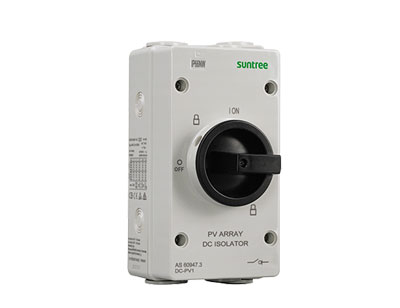Everything you need to know about rapid shutdown
Fire safety is a top priority for solar. There are a number of solar codes that protect against the risk of fire, but they need to be kept up to date. Let's take a closer look at quick shutdown requirements and why they are important for all solar installers and system owners.
What is Rapid Shutdown?
Rapid shutdown is an electrical safety requirement that was originally introduced by the National Electrical Code (NEC). The requirement applies to solar photovoltaic (PV) systems and requires a method of disconnecting or reducing the voltage to the rooftop solar module by adding an "on or off" switch.
Why is it important?
Quick shutdown provides a safe way for firefighters or solar installers to stop or reduce the voltage and current to a photovoltaic (PV) array, allowing them to perform their jobs safely and efficiently and avoid electrical hazards. Shutting down or lowering the voltage on the roof at the module level reduces or eliminates electrical shocks to firefighters due to the high voltages that can be generated by solar modules.
Do inverters already address this issue?
The inverter can be turned off to prevent the energy generated by the modules from passing through the inverter. However, as long as the sun is shining, the solar modules will continue to generate electricity, which creates voltage and current in the wires between the modules and the inverter. As a result, most fast shutdown codes require shutdown at the module level, so module-level power electronics (MLPE) or microinverters are often used to fulfill this function.
What is the principle of a fast shutdown system?
The principle of a fast shutdown system is basically to effectively stop the system by interrupting the running program and shutting down the associated processes. Specifically, a fast shutdown system usually performs the following steps:
1、Send a shutdown signal: The operating system sends a shutdown signal to all running programs and processes to notify them that the system is about to shut down.
2、Save data: Running programs will be asked to save unfinished work and data and write them to a storage device so that they can be recovered at the next startup.
3, close the process: the system will close all the running processes and services in turn to ensure that they correctly release system resources and save the necessary state.
4, uninstall drivers: the system will uninstall the drivers in use to avoid conflicts or errors at the next boot.
5. Shutting down hardware: Finally, the system will issue a command to the hardware to power down or enter low-power mode, thus shutting down the system completely.
The exact implementation of these steps may vary depending on the operating system and hardware platform, but the overall principle is similar. The goal of a fast system shutdown is to ensure that the system can be safely and quickly stopped and that it will function normally the next time it is started.
Generalization
Rapid shutdown requirements are being adopted globally to protect firefighters while working around solar PV equipment.







